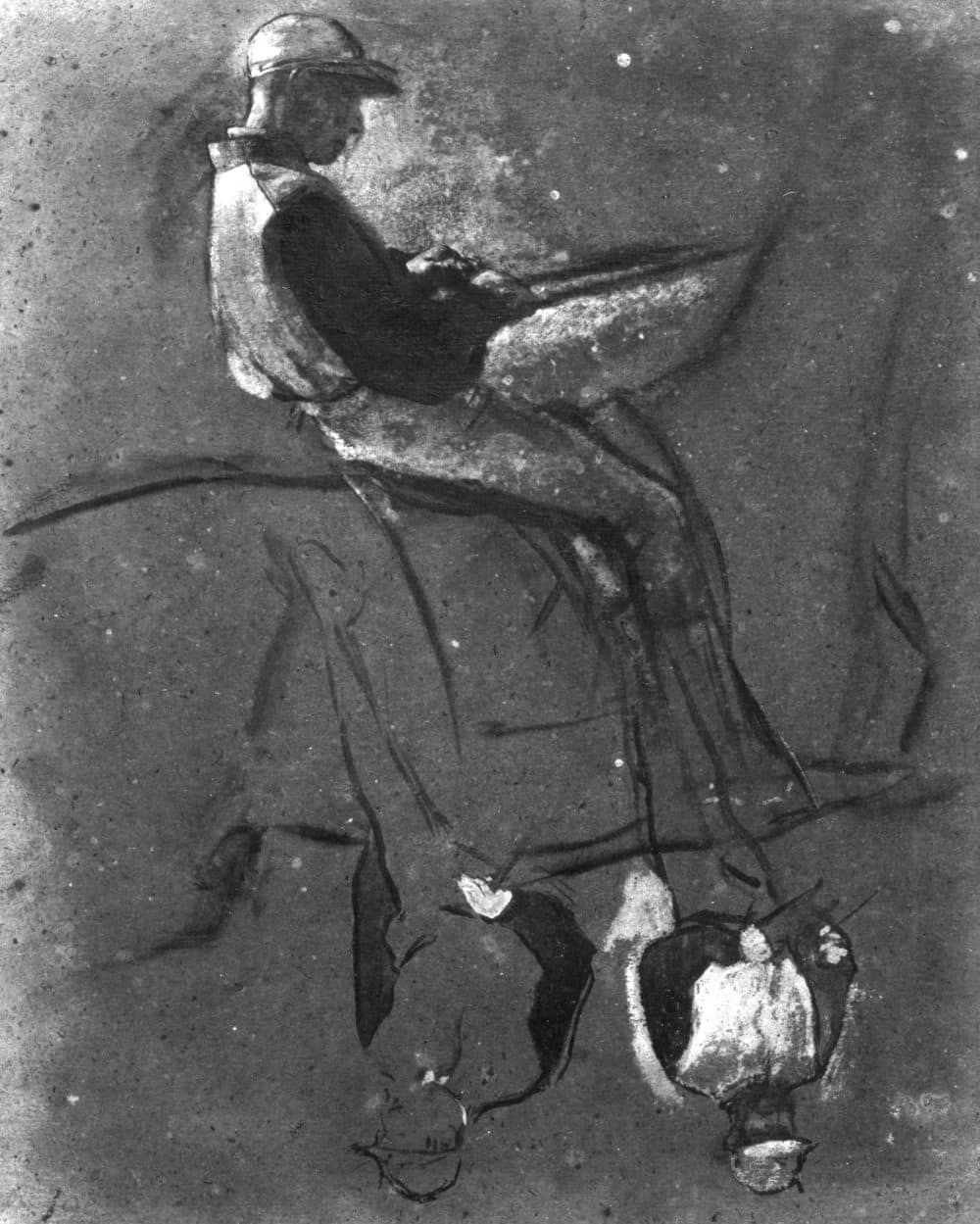Advertisement
< Back To Missing Art
‘Three Mounted Jockeys,’ By Edgar Degas

1885-1888
Five works on paper by Edgar Degas were stolen from cabinets in the Short Gallery, the passageway that leads into the large Tapestry Room on the Gardner’s second floor. They were stored with other prints and drawings in cabinets designed by Mrs. Gardner herself. Although he began as a painter of Biblical and historical scenes, Degas, like Manet (who was two years his senior), became famous for his depictions of ordinary life — most notably images of dancers, jockeys, and racing horses. The loss of three drawings of scenes with horses is a significant one.
“Three Mounted Jockeys” (1885-1888) is a large, unfinished ink drawing (about 12-by-9½ inches), with some touches of oil paint. One of the jockeys, the most clearly visible, is in a striking position on the horse, leaning back with one foot in the stirrups and the other leg stretched out around the horse’s neck. The other two jockeys on this sketch page are harder to see because they’re upside down.
— Written by Lloyd Schwartz